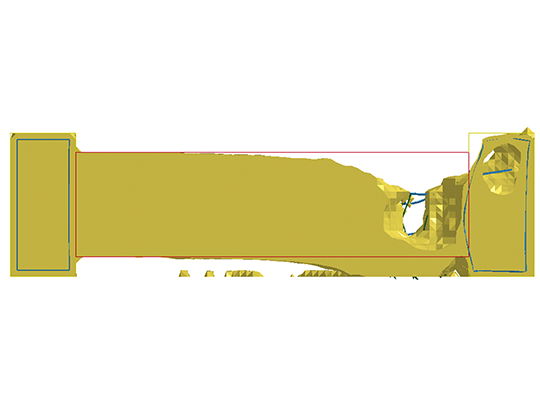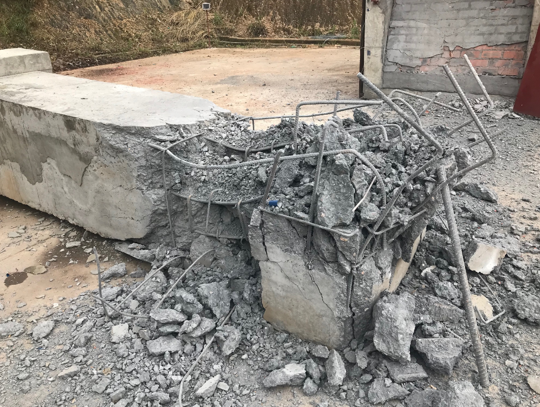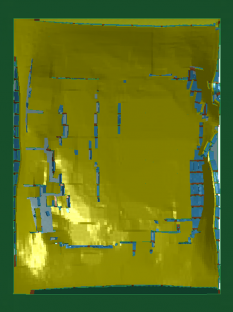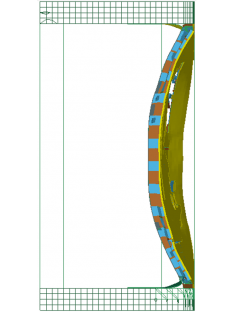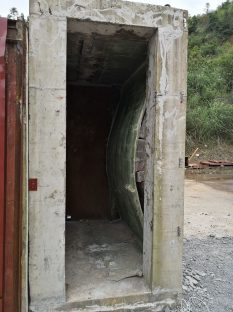Simulation using High-Fidelity Physics Based (HFPB) Finite Element Analysis approach is an advanced method in the research and design of protective technologies.
Close In Detonation Against Reinforced Concrete Structural Elements
The first image depicts a numerical simulation of a close-in detonation against a reinforced concrete structural element, accurately modeling shockwave propagation and structural deformations. The second image shows the actual physical detonation, where the observed damage closely mirrors the aforementioned simulation’s predictions. This strong resemblance validates the accuracy of the numerical model in predicting RC structure behavior under extreme blast conditions.
Fiber-Reinforced Polymer (FRP) Masonry Wall - Subjected to Blast Loads
The first image presents a numerical simulation of a close-in detonation against a fiber-reinforced polymer (FRP) masonry wall, capturing the intricate interactions between the blast waves and the composite material. The simulation accurately predicts stress distribution, wall deflection, and potential failure mechanisms within the FRP-reinforced structure.
The second image shows the aftermath of an actual close-in detonation against an FRP masonry wall. The damage observed, including cracking patterns and deformation, closely aligns with the simulation’s projections. This close correlation between the simulated and real-world outcomes underscores the effectiveness of advanced modeling techniques in predicting the blast resistance of FRP-reinforced masonry walls.
Please note that two sets of perspectives are shown in this example.
Roller Shutter Door - Subjected to Blast Loads
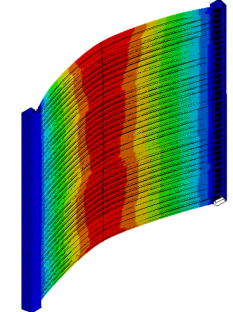
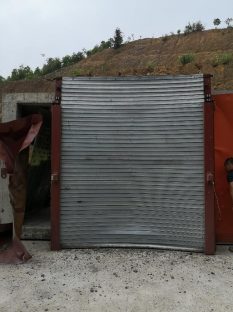
The first image shows a numerical simulation of a close-in detonation against a roller shutter, accurately modeling the shutter’s deformation, stress distribution, and potential failure points under blast loading. The second image captures the actual physical detonation, where the damage and structural response closely align with the simulation’s predictions, demonstrating the model’s reliability in predicting the behavior of roller shutters under real-world explosive conditions.
The following video presents a side-by-side comparison of a High-Fidelity Physics-Based (HFPB) Finite Element Analysis (FEA) simulation and an actual crash test on bollards. On the right, the simulation details the vehicle’s impact with the bollards, showing precise deformation, energy absorption, and the vehicle’s deceleration. On the left, the actual crash test footage mirrors these dynamics, with the vehicle striking the bollards and exhibiting similar patterns of deformation and energy dissipation. The close correlation between the simulation and the real-world test underscores the accuracy and reliability of the HFPB FEA in predicting the bollards’ performance under extreme impact conditions.
The video below presents a side-by-side comparison of a high-fidelity physics-based (HFPB) finite element analysis (FEA) simulation and an actual crash test on crash-rated walls. On the right, the simulation visualizes the vehicle’s impact, showing detailed stress distribution, wall deformation, and energy absorption. On the left, the actual crash test footage captures the vehicle colliding with the wall, displaying nearly identical patterns of deformation and structural response. The striking similarity between the simulation and the real-world test highlights the accuracy and reliability of the HFPB FEA in predicting the wall’s performance under extreme crash conditions.



